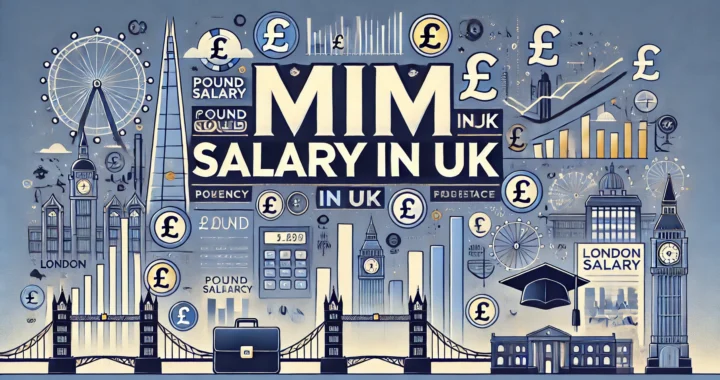Have you ever wondered how much it truly costs to take the GMAT and whether it fits into your study abroad budget? For Indian students aspiring to pursue a master’s degree abroad, the GMAT Exam Fees is often the first step in a series of financial considerations. The Graduate Management Admission Test (GMAT) is a vital requirement for admission to top business schools globally, and understanding the costs involved is essential for effective planning.
This guide not only breaks down the GMAT Exam Fees but also covers additional expenses such as rescheduling charges, fee waivers, and retake costs. You’ll also find tips to save money, insights into preparation strategies, and the latest updates for the GMAT Focus Edition syllabus. By the end of this post, you’ll have a comprehensive understanding of the GMAT exam costs and actionable tips to optimize your budget for a smooth study abroad journey.
Key Takeaways:
- The standard GMAT exam fee is $275 USD, with additional costs for rescheduling, cancellations, and retakes.
- Fee waivers are available for students with financial need; explore this option early to maximize savings.
- Indian test-takers should account for currency conversion charges and consider affordable payment methods to reduce overall costs.
- Choose GMAT coaching wisely based on location, resources, and personalized support.
How Much is the GMAT Exam Fees?

Understanding the GMAT Exam Fees is crucial for students planning their study abroad journey. As of 2024, the standard registration cost for the GMAT exam is $275 USD, but this fee varies based on the test-taker’s location. Below is a detailed breakdown of the GMAT Exam fees across major regions:
| Region | Standard GMAT Exam Fees |
|---|---|
| United States | $275 USD |
| Europe | €250 EUR |
| India | ₹25,000 INR (approx.) |
| Australia | $285 AUD |
It’s important to note that regional variations occur due to currency fluctuations and local administrative costs. Additionally, Indian test-takers should account for potential conversion charges if paying via international credit cards.
Why It Matters:
Budgeting for the GMAT involves more than just the exam registration fee. Understanding regional differences and potential additional costs, like rescheduling fees or coaching, helps students plan effectively.
Additional GMAT Exam Fees
Apart from the standard GMAT Exam Fees, test-takers should consider potential additional costs, such as rescheduling, cancellation, and retake fees. Here’s a detailed breakdown of GMAT Exam Fees:
| Fee Type | Conditions | Fee Amount |
|---|---|---|
| Rescheduling Fees | More than 7 days before the test date | $50 USD |
| Within 7 days of the test date | $150 USD | |
| Cancellation Charges | More than 7 days before the test date (Refund) | $100 USD |
| Within 7 days of the test date | No refund | |
| Retake Costs | Per additional attempt | $275 USD |
Additional Details:
- You can retake the GMAT up to five times in a 12-month period with a lifetime limit of eight attempts.
- All fees must be paid online via credit card or other approved payment methods.
Pro Tip: To save money, avoid rescheduling or canceling within 7 days of the test date. Carefully plan your test day to minimize unnecessary fees and ensure smooth progress in your study abroad journey.

How to Get a GMAT Fee Waiver?
For students facing financial constraints, applying for a GMAT fee waiver can significantly reduce the burden of exam-related expenses. Here’s how you can apply:
Eligibility Criteria
- Fee waivers are typically available to students with demonstrated financial need or from underrepresented backgrounds.
- You must apply through an educational institution or a sponsoring organization approved by GMAC (Graduate Management Admission Council).
Steps to Apply
- Contact Your Institution: Approach your university or educational institution to check if they are authorized to issue fee waivers.
- Submit Documentation: Provide proof of financial hardship or other eligibility criteria as required.
- Receive the Waiver Code: If approved, you’ll receive a unique waiver code to use during registration.
Key Tips for Indian Students
- Reach out to institutions with strong ties to GMAC, such as top universities and business schools, to explore waiver opportunities.
- Utilize templates for formal requests. For example, a sample request might read:
“I am writing to inquire about the possibility of obtaining a GMAT fee waiver due to my financial circumstances. Attached are the necessary documents for your review.”
Pro Tip: Many scholarships and organizations, like the Fulbright Program, also cover GMAT fees for eligible candidates. Explore these options early in your preparation.
What’s the GMAT Exam Fees in India?
The GMAT exam fees in India is approximately ₹25,000 INR, but students should be mindful of additional costs that may apply. Here’s a detailed breakdown of what Indian test-takers need to know:
| Component | Details | Cost (Approx.) |
|---|---|---|
| Standard GMAT Fee | Registration for one attempt | ₹25,000 INR |
| Rescheduling Fee (7+ days) | Changes made more than 7 days in advance | ₹4,500 INR |
| Rescheduling Fee (<7 days) | Changes made within 7 days of the test | ₹13,500 INR |
| Cancellation Fee (Refund) | If canceled 7+ days before the test date | ₹9,000 INR |
Currency Conversion and Payment Options
- Since the fee is charged in USD (approximately $275), currency conversion rates may apply.
- Payment options include international credit/debit cards and e-wallets that support foreign transactions.
Pro Tip: Use a credit card with low or zero foreign transaction fees to save on additional charges. Platforms like Wise and Revolut can also help with competitive conversion rates.
What is the GMAT Exam Syllabus?

A thorough understanding of the GMAT syllabus is crucial for effective preparation. The exam evaluates analytical, quantitative, verbal, and reasoning skills essential for success in business schools. Below is a detailed breakdown of the syllabus:
| Section | Content Areas | Time (Minutes) | Questions |
|---|---|---|---|
| Analytical Writing Assessment (AWA) | Analysis of arguments, critical thinking, clarity, and grammar | 30 | 1 Essay |
| Integrated Reasoning (IR) | Graphics interpretation, two-part analysis, table analysis, multi-source reasoning | 30 | 12 |
| Quantitative Section | Problem-solving, data sufficiency, arithmetic, algebra, geometry | 62 | 31 |
| Verbal Section | Reading comprehension, critical reasoning, sentence correction | 65 | 36 |
What’s New in the GMAT Focus Edition?
The GMAT Focus Edition introduces updates to improve test efficiency, such as:
- Reduced overall test duration.
- Enhanced section-specific content, focusing on skills most relevant to business education.
- Ability to review and edit answers in certain sections.
Pro Tip: Allocate preparation time based on your strengths and weaknesses in each section. Use official GMAT practice tests to familiarize yourself with the format and timing.
What is the GMAT Full Form?
The GMAT full form is the Graduate Management Admission Test. Understanding the test’s purpose and history can help students appreciate its role in their MBA journey.
History and Purpose
- Introduced in 1954, the GMAT was developed by the Graduate Management Admission Council (GMAC) to assess the skills required for success in graduate business programs.
- Today, it’s accepted by 7,700+ programs at over 2,400 universities worldwide.
Why the GMAT is Important
The GMAT is designed to evaluate critical thinking, decision-making, and problem-solving skills that are essential for business leadership roles. For students aiming to study abroad, excelling in the GMAT can:
- Strengthen their MBA application.
- Demonstrate their readiness for rigorous academic programs.
- Open opportunities for scholarships and financial aid.
Did You Know? More than 200,000 students take the GMAT annually, making it one of the most widely recognized standardized tests for business schools.
What Was the GMAT Exam Date in 2023?
If you’re preparing for the GMAT, understanding the test dates and registration patterns from previous years, like 2023, can help you plan effectively. Here’s a recap of the key GMAT dates in 2023:
| Event | Dates (2023) |
|---|---|
| Registration Opens | January 1, 2023 |
| First Available Test Date | February 1, 2023 |
| Last Registration Deadline | December 15, 2023 |
| Last Available Test Date | December 31, 2023 |
Key Observations from 2023
- Registration trends showed a significant spike in May and June, aligning with early application rounds for top business schools.
- Weekend slots were booked faster, emphasizing the need to register early to secure preferred dates.
Pro Tip: Avoid the rush by planning your GMAT attempt during less crowded months, such as February or August, when competition for test slots is lower.
What’s the GMAT 2024 Registration Last Date?

Planning ahead for the GMAT 2024 registration last date ensures you don’t miss out on your preferred test date or location. Here’s what you need to know:
| Event | Dates (2024) |
|---|---|
| Registration Opens | January 1, 2024 |
| First Available Test Date | February 5, 2024 |
| Recommended Last Registration | Varies by Test Center |
| Last Available Test Date | December 31, 2024 |
Tips for Securing Your Preferred Slot
- Register Early: Slots fill quickly, especially for weekend dates and at popular centers in cities like Mumbai, Delhi, and Bangalore.
- Choose a Flexible Timeline: Aim to book your GMAT exam 3–6 months before your target business school application deadlines.
- Check Holidays: Avoid scheduling exams around public holidays or festival seasons to prevent disruptions.
Best GMAT Coaching in India
Choosing the right GMAT coaching can significantly impact your preparation and results. With a wide range of options available, Indian students can select from top coaching institutes or online platforms tailored to their needs. Here’s a curated list of the best GMAT coaching options in India:
| Coaching Center | Location/Online | Features | Fees (Approx.) |
|---|---|---|---|
| Jamboree | Pan-India & Online | Expert faculty, comprehensive study material, mock tests | ₹40,000 – ₹60,000 |
| Manhattan Review | Major cities & Online | Focus on strategy, adaptive learning modules | ₹50,000 – ₹70,000 |
| The Princeton Review | Pan-India & Online | Live classes, personalized feedback, global resources | ₹45,000 – ₹75,000 |
| Manya Education | Pan-India & Online | Targeted practice sessions, one-on-one mentoring | ₹50,000 – ₹80,000 |
| EduShastra | Online | Flexible fee structure, personalized batch sizes | ₹30,000 – ₹50,000 |
Factors to Consider When Choosing Coaching
- Location Flexibility: Opt for online coaching if accessibility is a challenge.
- Faculty Experience: Check reviews and success rates of the instructors.
- Course Offerings: Look for institutes that offer customized packages based on your strengths and weaknesses.
- Mock Tests: Ensure regular access to mock exams that simulate the real GMAT experience.
Plan Ahead for a Successful GMAT Journey
Understanding the GMAT exam fees and associated costs is the first step toward planning a successful study abroad journey. By being well-informed about registration fees, additional charges, and waiver options, students can budget effectively and avoid unexpected financial hurdles. Preparing for the GMAT is not just about the test—it’s about investing in your future. From selecting the best coaching resources to creating a structured study plan, every decision plays a critical role in achieving your dream of studying at a top business school.
With a strategic approach and proper preparation, you can excel in the GMAT, opening doors to global academic and professional opportunities. Start planning today and take one step closer to your dream of studying abroad!
FAQs on GMAT Exam fees
What are GMAT exam fees in India?
The GMAT exam fee in India is approximately ₹25,000 INR, equivalent to $275 USD. This fee covers the standard registration for one attempt. However, Indian test-takers should account for additional costs such as rescheduling fees (₹4,500 INR if done 7+ days in advance or ₹13,500 INR within 7 days) and cancellation fees (₹9,000 INR refund for cancellations made 7+ days before the test). Since the fee is charged in USD, currency conversion and foreign transaction charges may apply. Using international credit/debit cards with low foreign transaction fees can help reduce costs.
Is GMAT easier than CAT?
Determining whether the GMAT is easier than the CAT depends on the individual’s skills and preparation. The GMAT focuses more on analytical, reasoning, and verbal skills, while the CAT emphasizes higher-level quantitative aptitude and logical reasoning. GMAT is more predictable with its standardized syllabus, allowing for targeted preparation, whereas CAT varies in difficulty each year. Additionally, GMAT scores are valid for 5 years, while CAT scores are only valid for one year, making GMAT more flexible for global MBA aspirations.
Why is GMAT fee so high?
The GMAT exam fee is high due to the costs associated with maintaining its global standardization and credibility. Factors contributing to the fee include:
- Advanced technology for adaptive testing and security measures.
- Test delivery across thousands of locations worldwide.
- Research and updates, like the GMAT Focus Edition, ensuring relevance to business education.
- Administrative and operational expenses incurred by GMAC.
For students facing financial constraints, GMAT fee waivers are available through certain institutions, which can help reduce this burden.
How much does it cost to get a GMAT?
The total cost of taking the GMAT exam depends on additional expenses beyond the $275 USD registration fee. Here’s a breakdown:
- Rescheduling Fees: $50 USD (7+ days before the test) or $150 USD (within 7 days).
- Cancellation Fee: Refund of $100 USD (if canceled 7+ days before).
- Retake Fee: $275 USD per additional attempt.
- Preparation Costs: Coaching (₹30,000–₹80,000 INR) and study materials (₹5,000–₹15,000 INR).
Indian students should also account for currency conversion and foreign transaction fees if paying through international cards.




